As I mentioned here, the primary reason that I purchased a 2010 Jeep Wrangler JK for towing behind my motorhome – my toad. They are relatively light (compared to many other vehicles) and are easy to tow four wheels down (on the road) by putting the transfer case in neutral which completely disconnects the wheels from the transmission. However; they can’t be towed out of the box. They need a base plate, wire harness, auxiliary braking system, and, or course, the tow bar.
We’ll start with the base plate. It is simply the device or connection to the vehicle that allows for a tow bar to be connected. There are several manufacturers and I decided to go with the Blue Ox unit.
Searching the web for the best pricing took me to RVUpgrades.com. Additionally, I happened to hit a 10% off sale which helped tremendously as I was purchasing both the base plate and the Ready Brute Elite tow bar.
Somewhat shockingly, the base plate showed up three working days after placing the order. This was even with the free shipping option! Kind of amazing to me that a big heavy box can transit the country in three days during the Christmas season rush but other times a little tiny box can take two weeks to make a similar trip. Oh well, I appreciated the quick arrival.
The Blue Ox base plate is a big, beefy chunk of steel. The finish is very nice and appears very durable.
Every bit of hardware necessary for installation is included in the box.
Blue Ox Tow Bar Base Plate Installation
Installation on the vehicle was pretty easy. I did a lot of thinking, checking, reading instructions, thinking, and double checking so the total elapsed time was pretty high – maybe four or five hours. In my old age, I’ve learned to slow down and make sure I know what I am doing before I do it – the old measure twice, cut once axiom. This has saved me from LOTS of mistakes.
Possibly the worst part of the installation is the first step, removing the belly pan. It is affixed with some of those plastic expanding, fasteners things. What a pain. These were the Philips head screw types and nothing I did would cause the inner screw portion to back out so the fastener would collapse and fall out. I ended up cutting several of them off and others I squished from the back side with pliers till they would pop out. Replacements are available at auto parts stores so I wasn’t worried about that.
The Blue Ox instructions are very good – just follow them. The process is basically to remove the belly pan, remove the front bumper (eight bolts), align the base plate on the frame, drill four holes in the frame using the base plate as an alignment jig, install and tighten the six bolts, and re-install the bumper.
The following photo shows were two of the eight front bumper bolts are located. Access to all of them is easy but they are on pretty tight so require some muscle to loosen.
Access for drilling the four holes is very good so that went smoothly. I would advise cleaning up the holes with a file and squirting a bit of paint on the exposed metal to prevent rust.
Once fully installed, the base plate is obvious on the front of the vehicle. It is by no means a “hidden” installation. However; since it is a Jeep, it does not standout or look odd – just part of the vehicle.
If the base plate was the extent of the changes, the job would be done. However; for towing purposes, I also needed to add a taillight wiring harness and Ready Brake cable to the brake pedal. Those things were more work than the base plate!
Note from JD: Part 2 of this project is here, part 3 is here, and part 4 is here

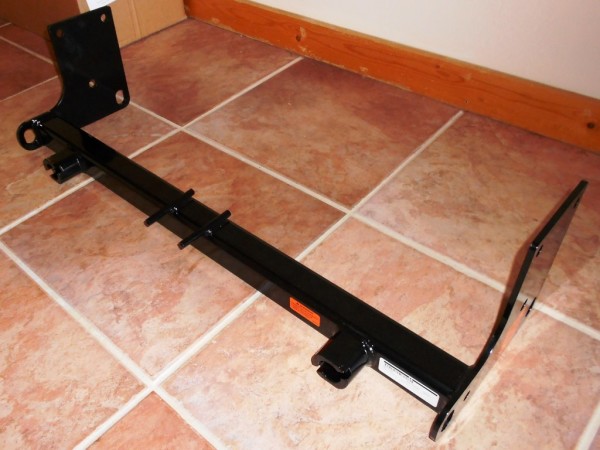

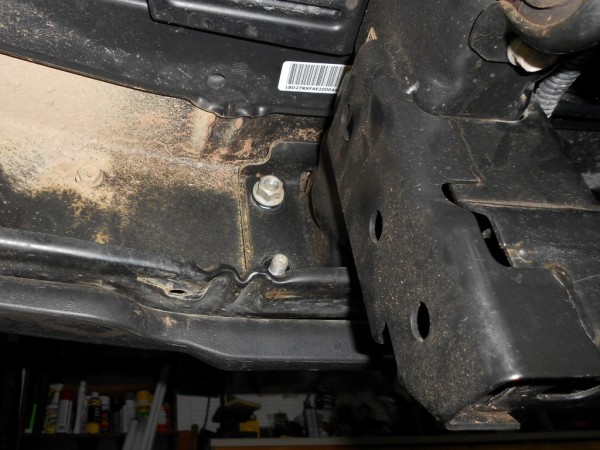
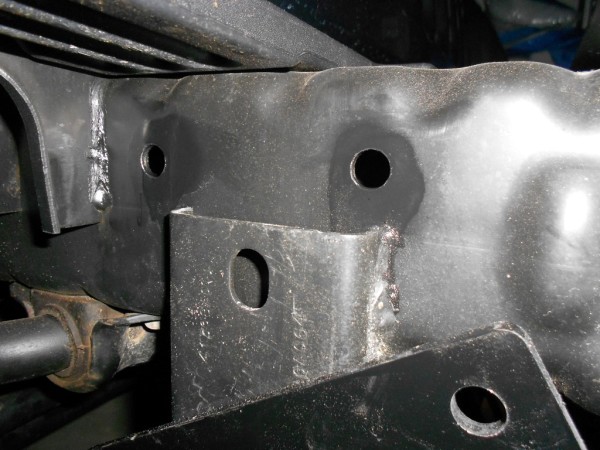
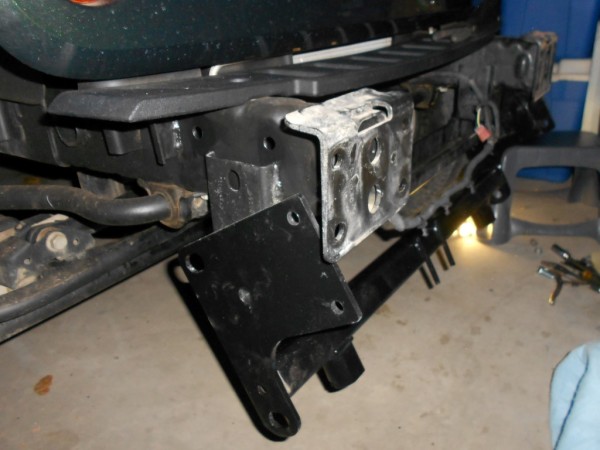
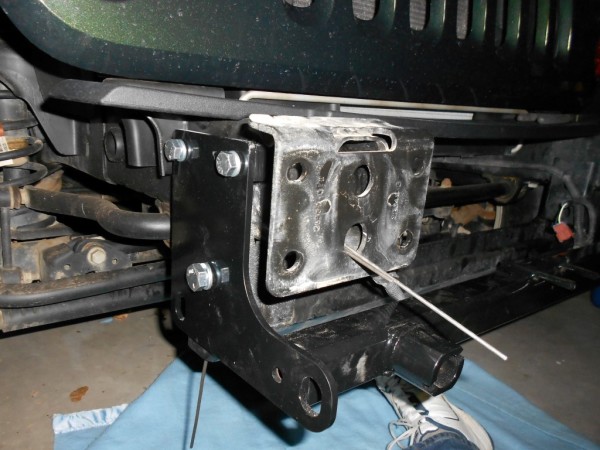
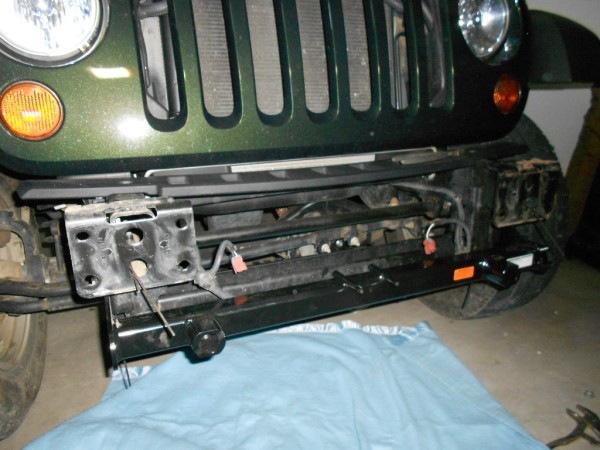


[…] from JD: This is part 3, part 1 is here, part 2 is here, and part 4 is […]